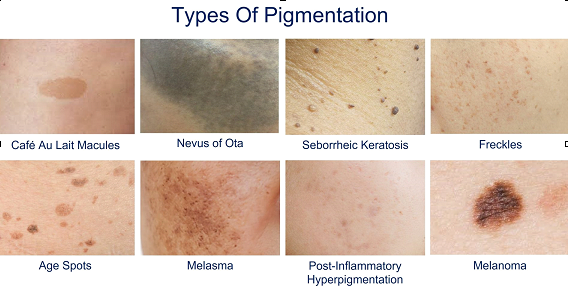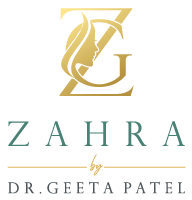Pigmentation is the darkening of an area of the skin or nails. Skin is the largest organ of our body. It is made of 2 layers, the upper epidermis and lower dermis. The lowermost layer of epidermis is called basal layer which has a structure called melanosome that contains a particular type of cells called melanocytes that produces a pigment called melanin. Depending upon the amount of pigment (melanin) produced, the thickness and vascularity of epidermis, skin undergoes pigmentation. If skin produces too much pigment, it gets darker, a condition known as hyperpigmentation.
Causes of Unwanted Pigmented Lesions
High concentrations of melanin can be due to various factors. Some types are present at birth, but most occur with age, or as a result of overexposure to the sun’s damaging ultraviolet rays. Pigmented lesions includes Post acne erythema and hyperpigmentation, Melasma, Phototan, Freckles, periorbital melanosis, Solar Lentigines, birthmarks, Nevus of Ota, café-au-lait macules, post inflammatory hyperpigmentation, tattoos , macular lichen amyloidosis etc.
How it works?

Q switched laser is also very popularly used for permanent tattoo removal.
How long will it take to remove tattoo?
What is the cost per session?
What are the precautions post procedure?
Post- Procedure Symptoms
- 1st–2nd day – redness and swelling will be noticed
- 3rd–5th day – brownish discolouration followed by scab formation occurs. Avoid manual removal of scabs
Pre- and Post- Procedure Instructions
- Stop all medicated creams 2 days before and 5 days after the treatment
- Apply an antibiotic cream twice daily for 5 days after the procedure
- Follow the cleansing and moisturizing routine from the second day onwards
- Apply sunscreen of minimum SPF 30 after the treatment
- Avoid threading / waxing / bleaching on face for 7 days after the treatment


